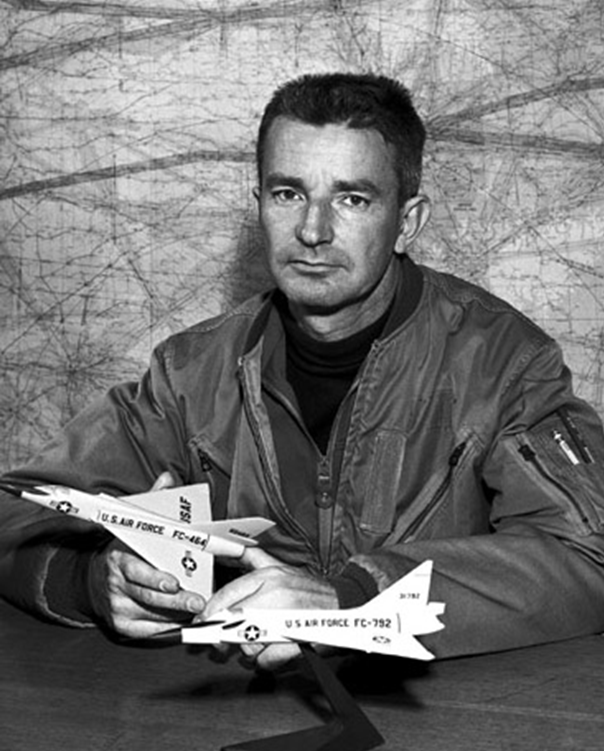

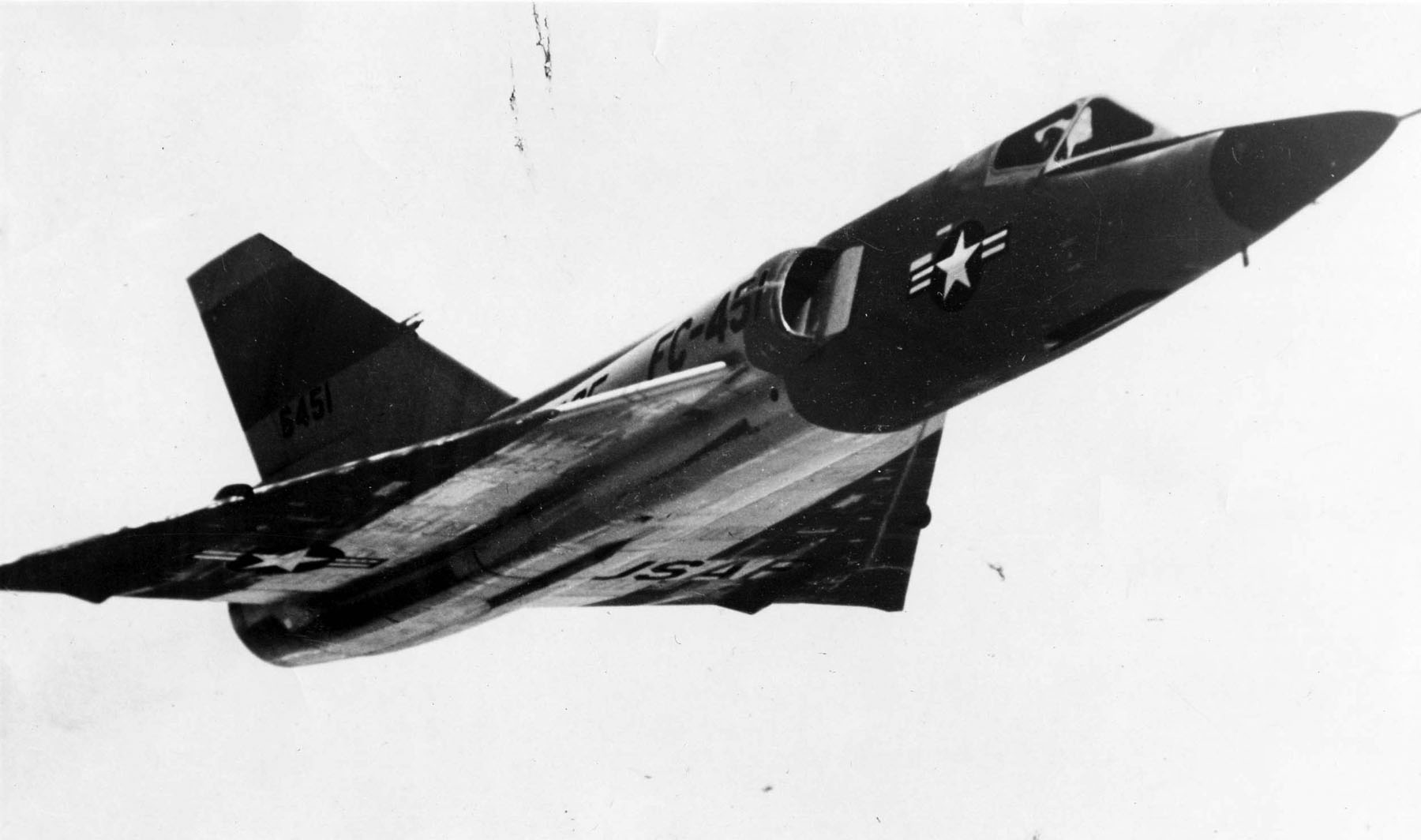
Built at the Convair Division of General Dynamics at San Diego, California, the delta-winged interceptor was trucked to Edwards on 14 December and prepared for its first flight.
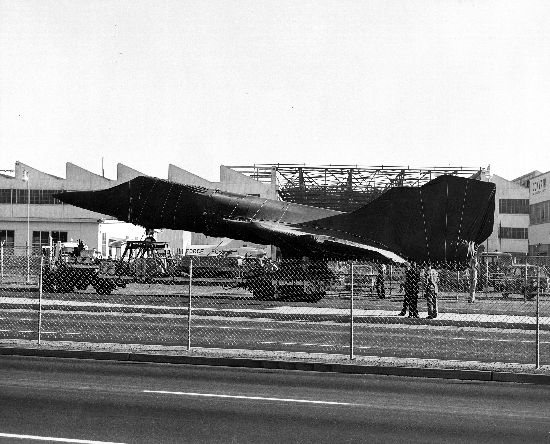
The Convair F-106A Delta Dart was the primary all-weather interceptor of the United States Air Force from 1959 to 1988, when it was withdrawn from service with the Air National Guard. It was a single-seat, single-engine delta-winged aircraft capable of speeds above Mach 2.
The airplane was a development of the earlier F-102A Delta Dagger, and was initially designated F-102B. However, so many changes were made that it was considered to be a new aircraft.
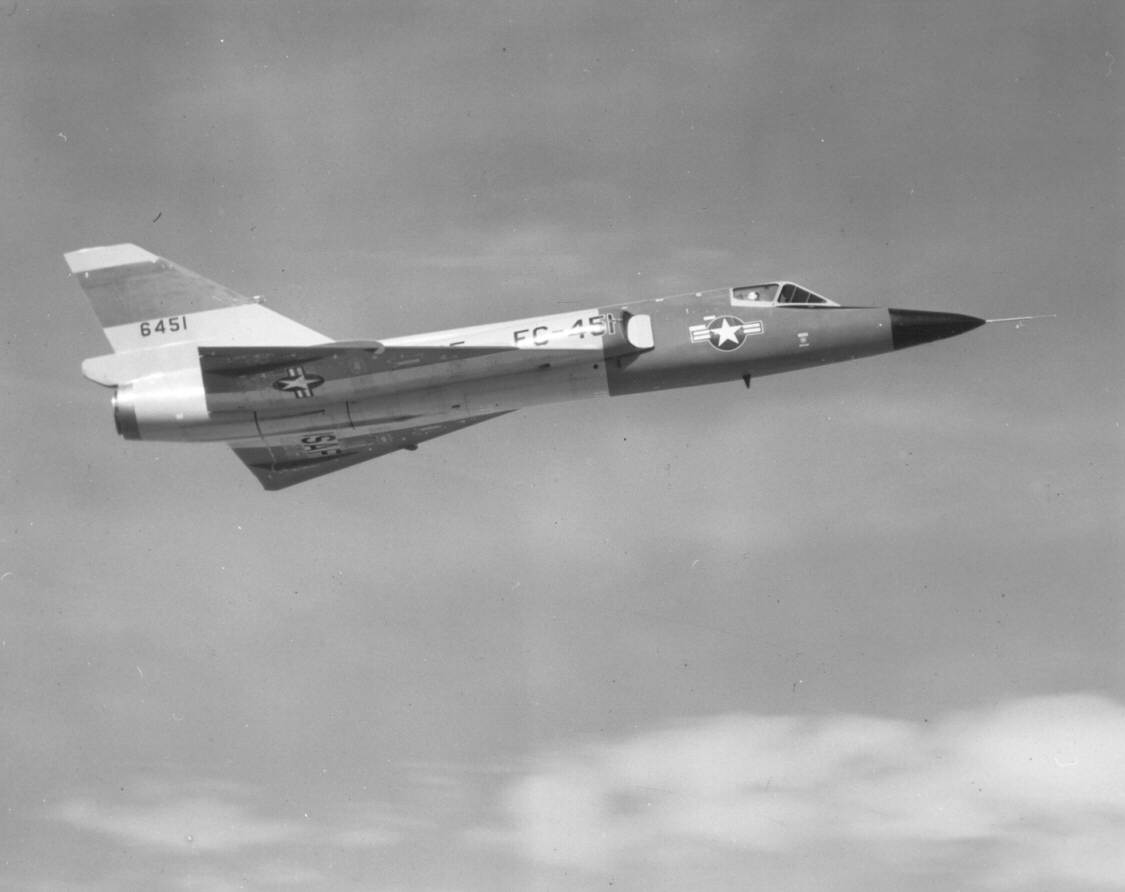
The F-106A is 70 feet, 8.78 inches (21.559 meters) long with a wingspan of 38 feet, 3.5 inches (11.671 meters). The total area of the delta wing is 697.83 square feet (64.83 square meters). The angle of incidence was 0° and there was no dihedral. The leading edges were swept aft 60°. The top of the vertical fin was 20 feet, 3.3 inches (6.180 meters) high. The Delta Dart weighs 23,646 pounds (10,726 kilograms) empty, and has a maximum takeoff weight (MTOW) of 38,729 pounds (17,567 kilograms).
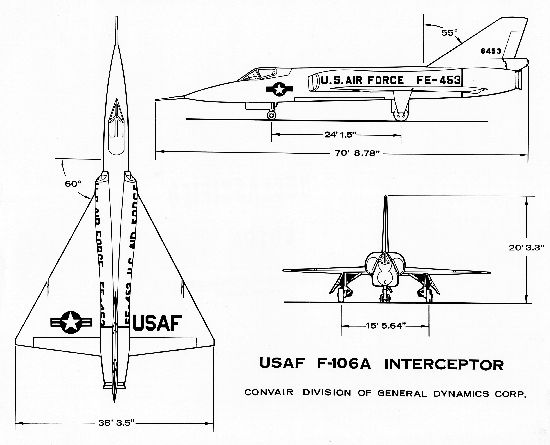
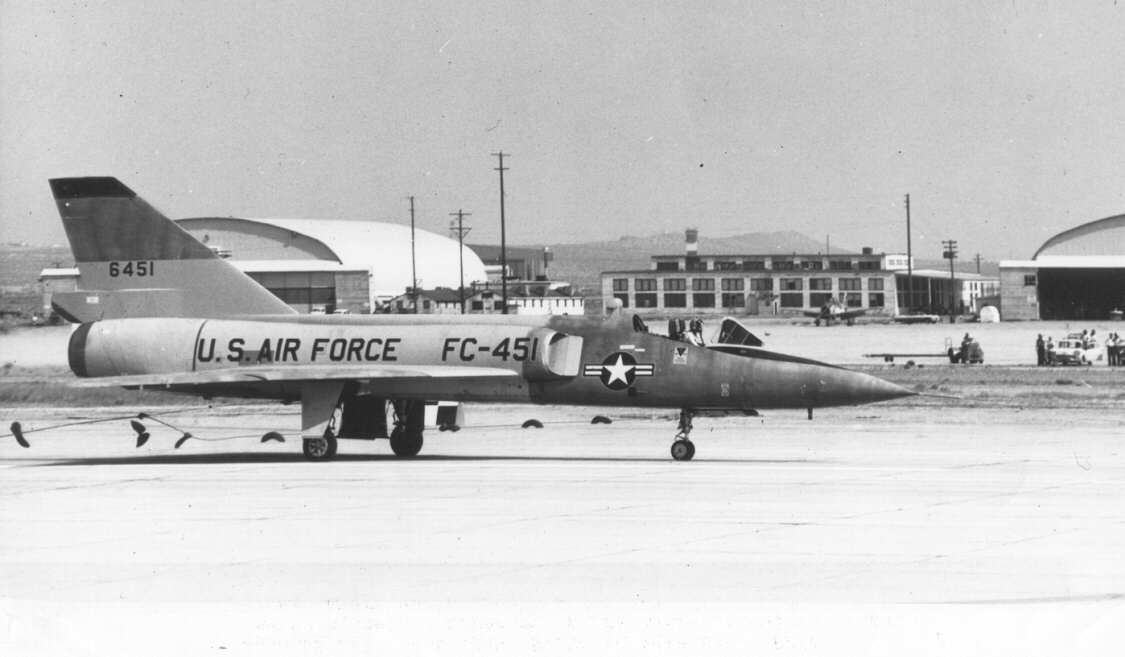

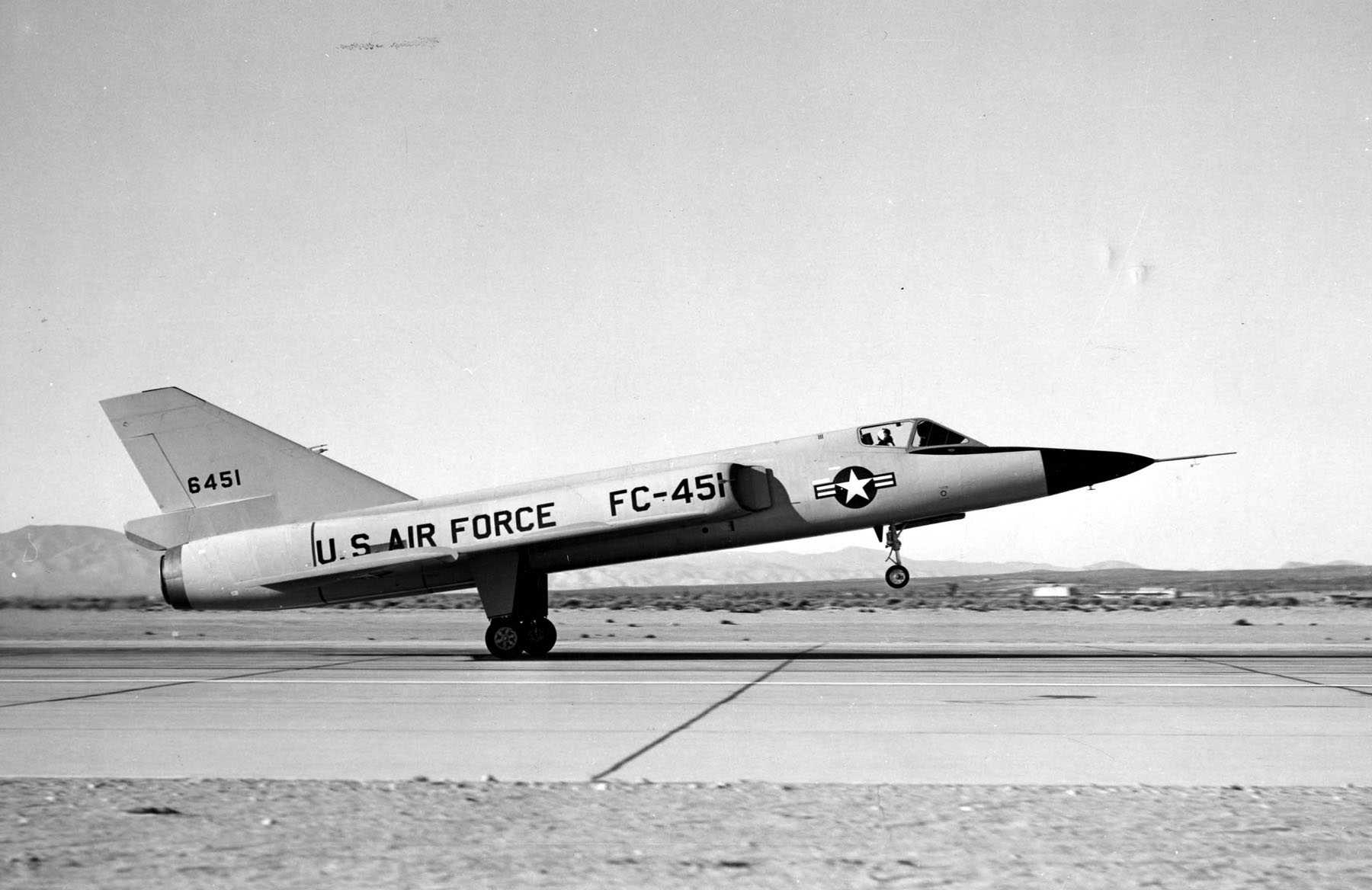
The interceptor has a cruise speed of 530 knots (610 miles per hour/982 kilometers per hour). and a maximum speed of 1,153 knots 1,327 miles per hour/2,135 kilometers per hour) at 35,000 feet (10,668 meters). The F-106A had a service ceiling is 53,800 feet (16,398 meters) and a rate of climb of 48,900 feet per minute (248 meters per second). Its combat radius was 530 nautical miles (610 statute miles/982 kilometers) and the maximum ferry range was 1,843 nautical miles (2,121 statute miles/3,413 kilometers).
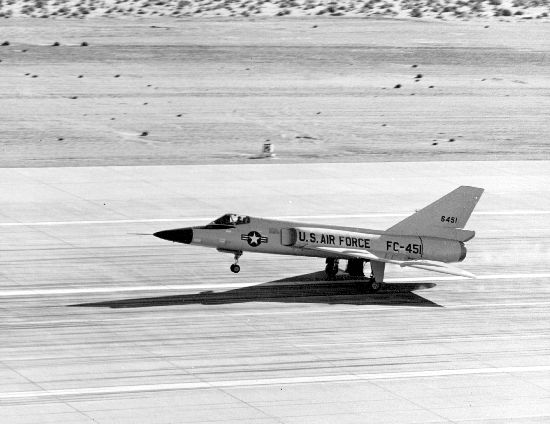
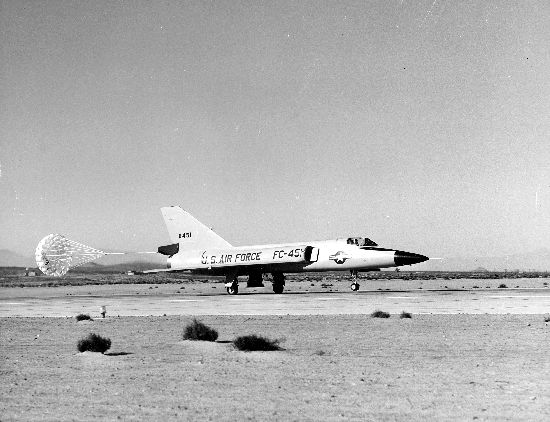
The Delta Dart was armed with four GAR-3A radar-homing, or -4A (AIM-4F, -4G) infrared-homing Falcon air-to-air guided missiles, and one MB-1 (AIM-2A) Genie unguided rocket with a 1.5 kiloton W-25 nuclear warhead. The missiles were carried in an internal weapons bay. In 1972, the General Electric M61A1 Vulcan 20mm cannon was added to the rear weapons bay with 650 rounds of ammunition. (The number of gun-equipped Delta Darts is uncertain.)
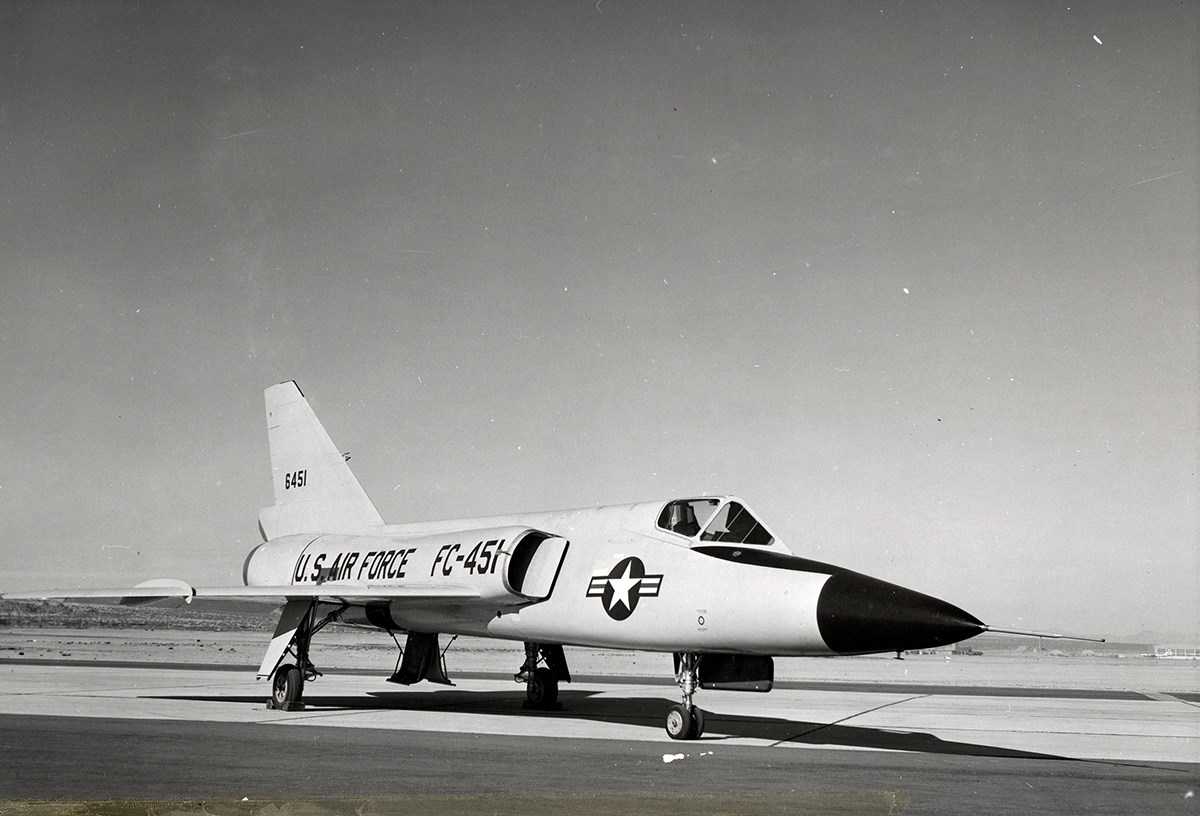
Convair built 342 F-106 interceptors. 277 were F-106As and the remainder were F-106B two-seat trainers.
56-451, the first F-106A to fly, was transferred to the National Museum of the United States Air Force in 1960. In 1989, it was transferred to Selfridge Air Museum, near Mount Clemens, Michigan, marked as 59-0082 of the 171st Fighter Interceptor Squadron, Michigan Air National Guard.
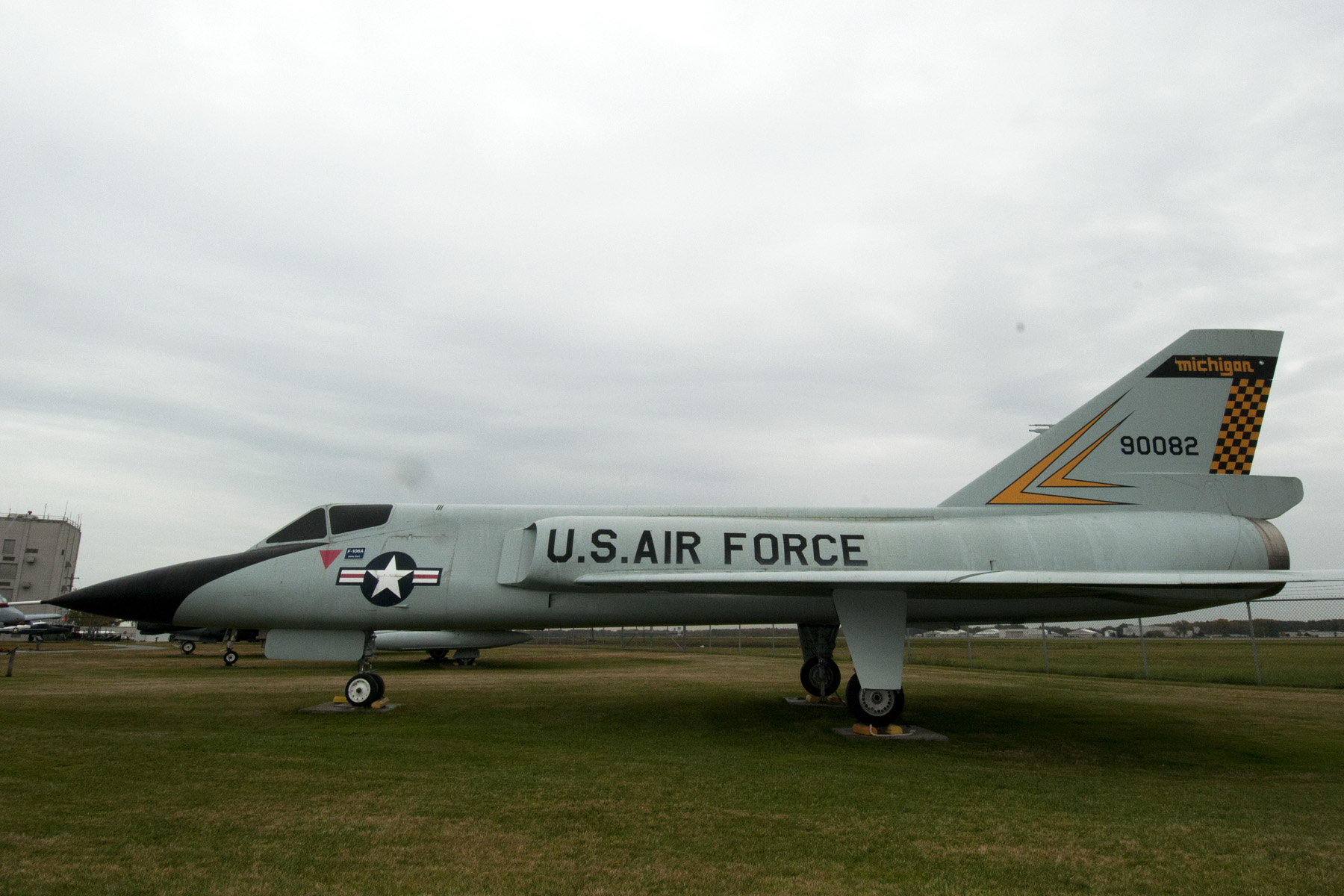
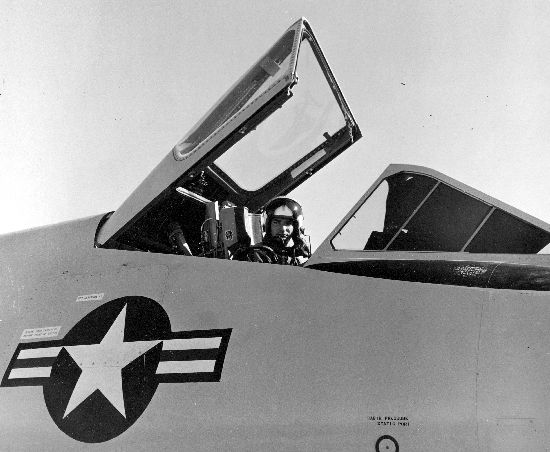
Richard Lowe Johnson ¹ was born at Cooperstown, North Dakota, 21 September 1917. He was the eighth of nine children of Swedish immigrants, John N. Johnson, a farmer, and Elna Kristina Helgesten Johnson, a seamstress.
Dick Johnson attended Oregon State College at Corvallis, Oregon, as a member of the Class of 1943. He was a member of the Sigma Alpha Epsilon (ΣΑΕ) fraternity. Johnson was a pitcher for the college baseball team, and later, played for the Boston Red Sox “farm” (minor league) system.
On 18 June 1942, Johnson enlisted as a private in the Air Corps, United States Army. On 5 November, he was appointed an aviation cadet and assigned to flight training.
Aviation Cadet Johnson married Miss Juanita Blanche Carter, 17 April 1943, at Ocala, Florida. The civil ceremony was officiated by Judge D. R. Smith.
After completing flight training, on 1 October 1943, Richard L. Johnson was commissioned as a second lieutenant, Army of the United States (A.U.S.).
Lieutenant Johnson was assigned to the 66th Fighter Squadron, 57th Fighter Group, Twelfth Air Force, in North Africa, Corsica, and Italy, flying the Republic P-47 Thunderbolt. He was promoted to first lieutenant, A.U.S., 9 August 1944, and just over three months later, 26 November 1944, to the rank of captain, A.U.S. On 14 May 1945, Captain Johnson was promoted to the rank of major, A.U.S. (Major Johnson was assigned a permanent rank of first lieutenant, Air Corps, United States Army, on 5 July 1946, with a date of rank retroactive to 21 September 1945.)
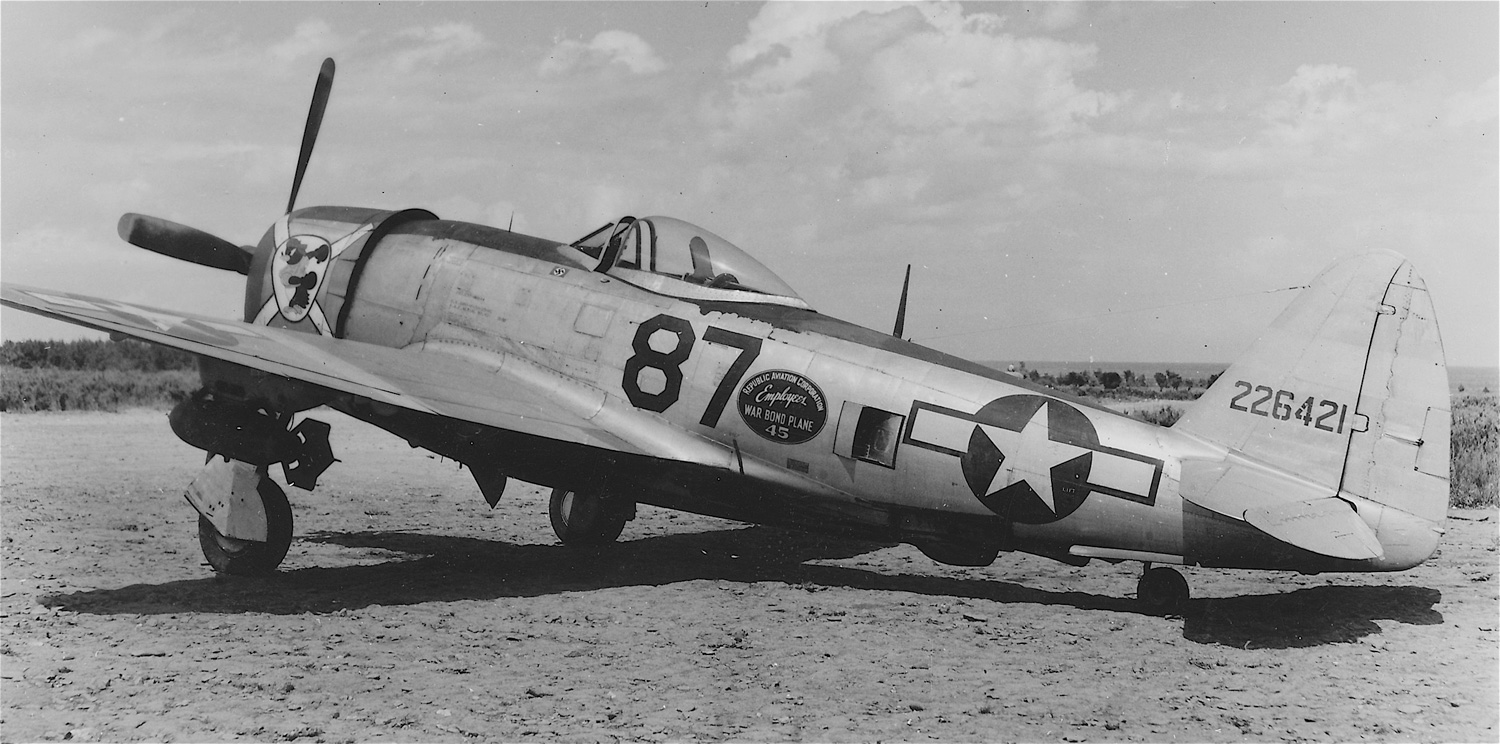
During World War II, Major Johnson flew 180 combat missions with the 66th Fighter Squadron. He is officially credited with one air-to-air victory, 1 July 1944. Johnson was awarded the Silver Star, the Distinguished Flying Cross with two oak leaf clusters (3 awards), and the Air Medal with twelve oak leaf clusters (thirteen awards).
In 1946, was assigned to the Air Materiel Command Engineering Test Pilot School at the Army Air Forces Technical Base, Dayton, Ohio (Wright-Patterson Air Force Base). He was the second U.S. Air Force pilot to be publicly acknowledged for breaking the “sound barrier.”
A few weeks after arriving at Dayton, Major Johnson met Miss Alvina Conway Huester, the daughter of an officer in the U.S. Navy. Dick Johnson and his wife Juanita were divorced 8 January 1947, and he married Miss Huester in a ceremony in Henry County, Indiana, 10 January 1947. They would have three children, Kristie, Lisa and Richard.
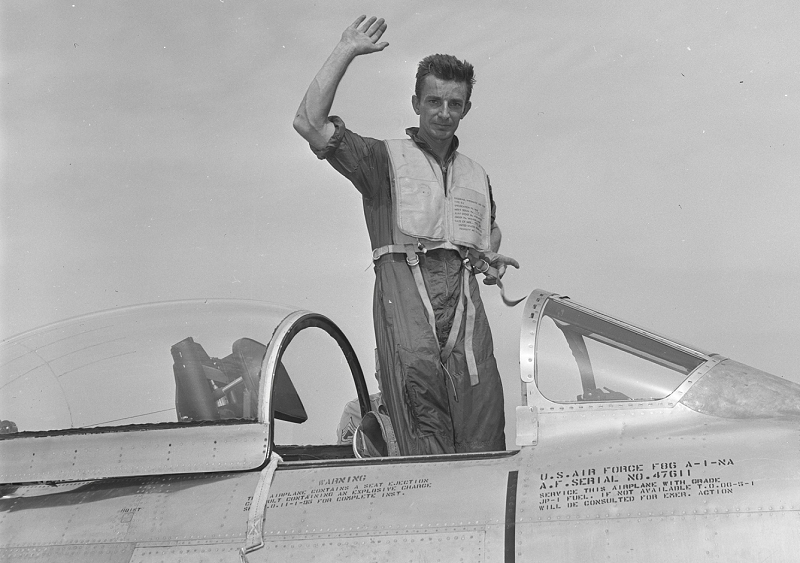
Dick Johnson set a Fédération Aéronautique Internationale (FAI) World Record Speed Over a 3 Kilometer Course,² flying the sixth production North American Aviation F-86A-1-NA Sabre, serial number 47-611, at Muroc Air Force Base, California (renamed Edwards AFB in 1949).
During the Korean War, Major Johnson was sent to the war zone to supervise field installations of improvements to the F-86 Sabre. He was “caught” flying “unauthorized” combat missions and was sent home.
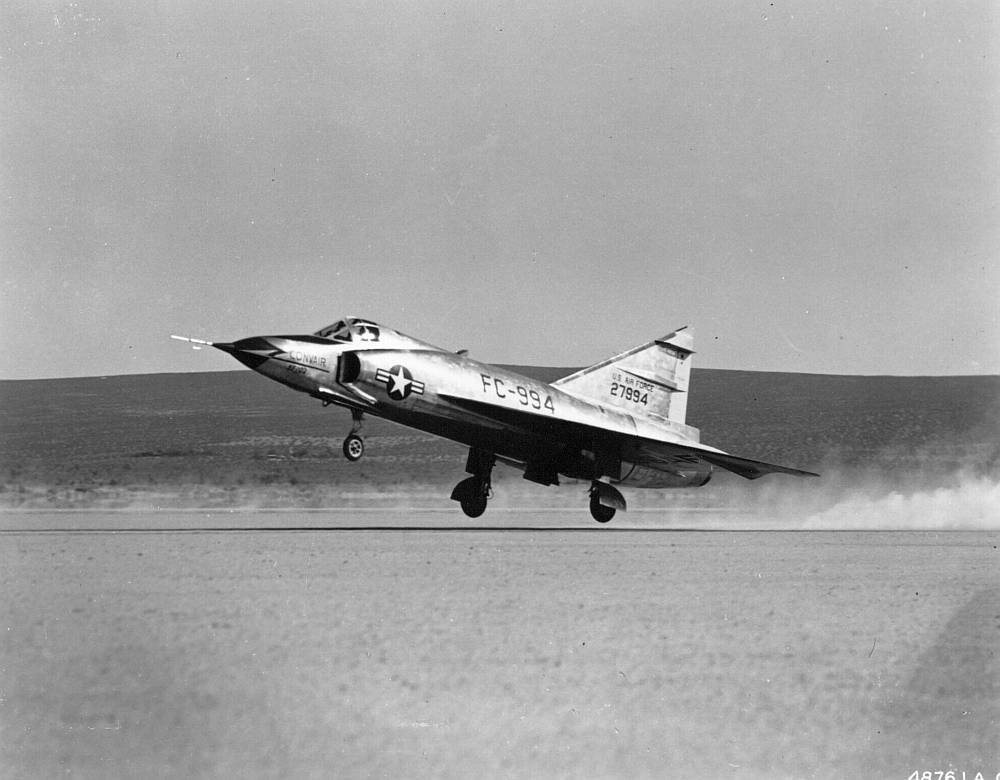
Lieutenant Colonel Johnson resigned from the Air Force in 1953 to become the Chief Test Pilot for the Convair Division of General Dynamics. He made the first flights of the YF-102 Delta Dagger, 24 October 1953, and the F-106A Delta Dart, 26 December 1956. He also made the first flight of the General Dynamics F-111A on 21 December 1964.
In 1955, Johnson was one of the six founding members of the Society of Experimental Test Pilots.
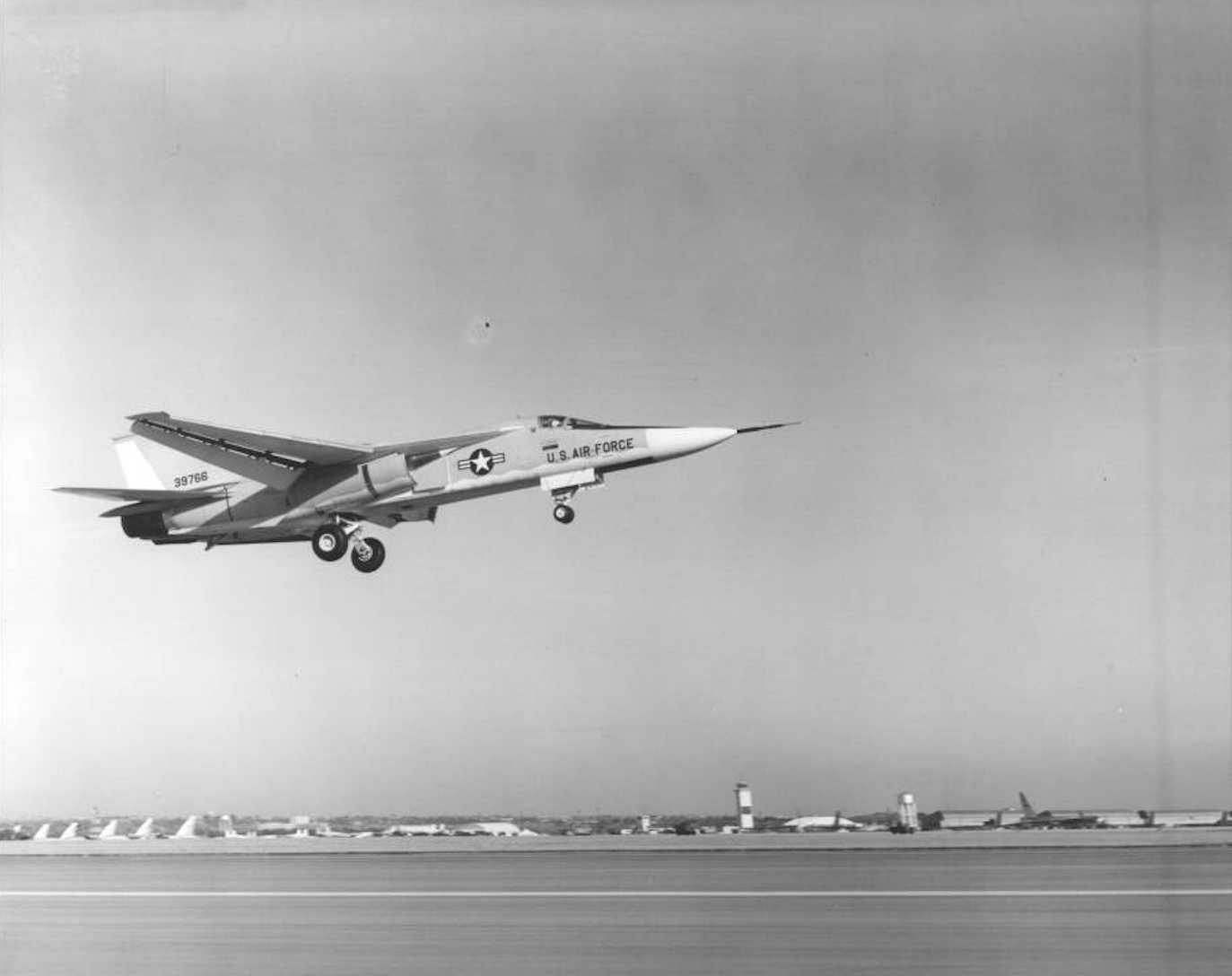
Dick Johnson was Chief Engineering Test Pilot for the General Dynamics F-111 “Aardvark.” In 1967, the Society of Experimental Test Pilots awarded Johnson its Iven C. Kincheloe Award for his work on the F-111 program. In 1977, Dick Johnson, then the Director of Flight and Quality Assurance at General Dynamics, retired.
In 1998, Dick Johnson was inducted into the Aerospace Walk of Honor at Lancaster, California. His commemorative monument is located in front of the Lancaster Public Library on W. Lancaster Boulevard, just West of Cedar Avenue. ³
Lieutenant Colonel Richard Lowe Johnson, United States Air Force, (Retired), died 9 November 2002 at Fort Worth, Texas. He was buried at Arlington National Cemetery, Arlington, Virginia, on 7 January 2003.
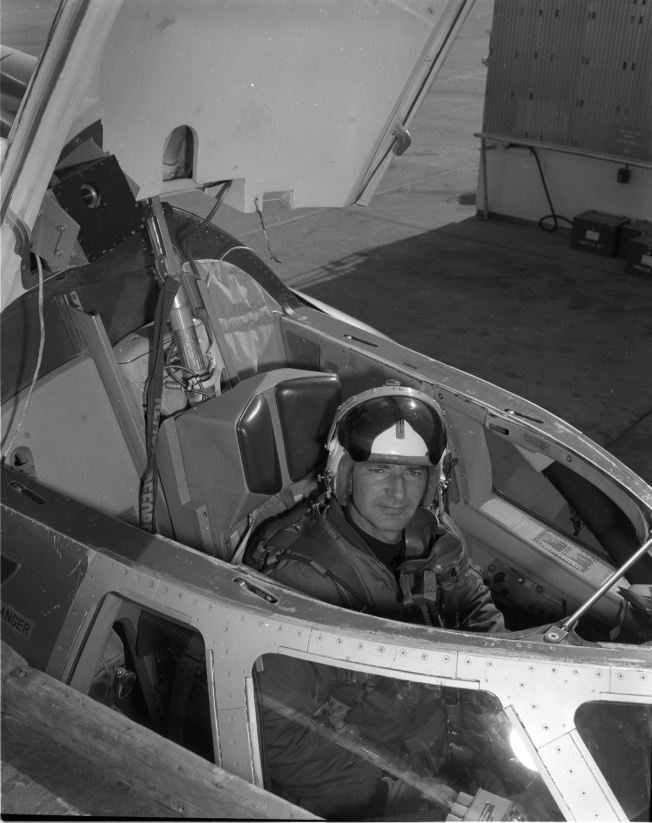
¹ Several sources spell Johnson’s middle name as “Loe.”
² FAI Record File Number 9866
³ Various Internet sources repeat the statement that “Richard Johnson has been honored with. . . the Thompson Trophy, Mackay Trophy, Flying Tiger Trophy, Federation Aeronautique Internationale Gold Medal and Golden Plate Award of the American Academy of Achievement. . . .” TDiA has checked the lists of awardees of each of the appropriate organizations and has not found any support for the statement.
© 2018, Bryan R. Swopes
Bryan,
I am commenting on your post: http://www.thisdayinaviation.com/tag/j57-p-11/ regarding my father. First, I would like to say that your website is an extraordinary contribution to aviation history on the web.
Regarding the post above, my father, Dick Johnson, was a P-47 pilot in WWII and was never a bomber pilot, except for the B-58 testing that he did. Also, he died in 2002, not 2003.
Thank you for the correction, and also for your very high compliment. It is an honor. Your father’s contributions to military aviation are immense. I will correct the article. I probably have other questions. May I contact you to follow up?
Found a typo: ith a 1.5 kiloton W-25 nuclear warhead. The missiles were carried in an internal weapons bay. In 1972, the General Electric M61A1 Vulcan 20mm cannon was added to the rear weapons bay with 650 round of ammunition
rounds plural
Thanks, Eric. 🙂
Bryan, A VERY late reply. Yes you may follow up with me as you wish.
Bryan,
An other „very late“ addition… But – for most of the „non – piloting“ aircraft – BUFF‘s – that are fascinated about the raw performance of an airplane or its beauty – it is beyond recognition – what a plane and a development as a weapons system – the F-106 truly was…
Being such a beautiful plane – with exceptional high aerial performance – one has to realize that its real beauty and achievement – lies within the electronics and the rockets it caried…
The Hughes MA1 fire control system – was the epitome of technology – at the moment when it saw the first missions… Not only made it the F-106 the first real „combat – ready“ all weather interceptor… It was also a really demanding plane for the (single) pilot.
Piloting an „attack – plane“ – in VMC conditions – and going to „dog – fight“ enemy fighter planes – is „demanding“ and – as soon as you got you some kills in Korea / Nam or Iraq – also very sexy…
On the other hand – flying an all weather „defender – plane“ – in IMC conditions – against enemy H – Bombers threatening Uncle Sam‘s mainlands – is a lot less sexy… but – nevertheless – as much – if not more – demanding of a piloting task.
Pilots flying the „Cadillac“ – were not conceived to be Top Gun „hot shots“ from the public… But – they had to deal with – „one of the most complex and demanding airplanes“ – in delicate or murky weather conditions… And that mad‘em pros in an own very special league …
How do I know… Because – we in Switzerland – just „stuffed“ the very same MA1 into and „bolted“ the A4M‘s onto our Mirage 3S fighters… and then flew the very same all weather missions…
Therefore – when you next time take a look at a F-106… Don‘t forget to take in mind all its (internal) technological marvels…
And please – „pray very deep respect“ to the „Cadillac“ drivers… Even if they were not the Top Gun hot shots… They were the ones – that dealt with a very complex and demanding fighting plane and they were the ones – that „stood guard“ and „defended Uncle Sam‘s mainland“… during the „hot“ cold war period…
Very well said, Roger. When you think about, just about every “first flight” described on TDiA pushed the boundaries of technology to the limits, and sometimes beyond. These machines didn’t create themselves, though. It was planners and engineers and draftsmen and machinists and technicians, and, and… People made everything happen.